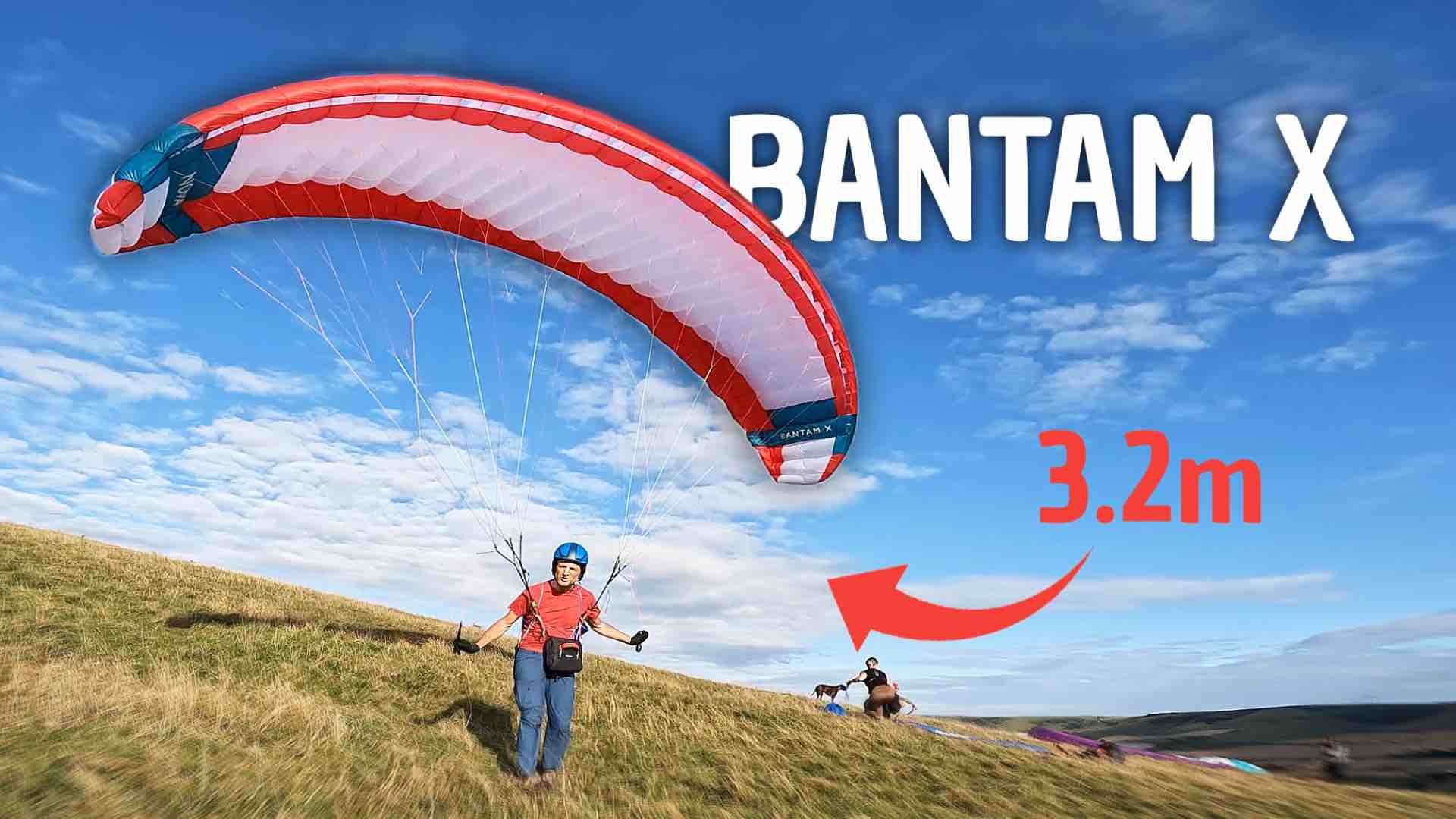
This is our FIRST LOOK and test at Nova BANTAM X.
The Bantam X is a unique addition to the Bantam series, building on the small mini wings designed for launching from mountains and confined spaces. With the Bantam X, the concept is taken a step further with super short lines. To give you an idea, the Bantam's lines are a little over 4 meters long, meaning the distance from the pilot to the wing is around 4 meters. In contrast, the Bantam X has lines that are only about 3 meters long. This might look a bit unusual, but the idea is to make take-offs possible in extremely tight spaces, much like the small, rocky launch sites we often encounter.
The glider comes in a compact little bag, and it’s impressively lightweight. One of the key things to explore with the Bantam X is the advantage of short lines when launching in tiny spaces. But beyond that, how does it actually perform during launch, ground handling, and flight? Starting with the risers, they’re slim but well-made—not those flimsy Dyneema shoelaces, which I'm glad to see manufacturers are moving away from. These risers are light, compact, and designed to be easy to handle, which is essential when launching in tricky spots and challenging conditions.
This model includes a wind speed and direction indicator, helping you gauge the wind strength and direction. It’s got a speed system with relatively short travel, which is expected with such a small wing. If you’re into PWC racing, this isn’t the glider for you, but that’s not its purpose. The Bantam X features soft links at the top, ingeniously integrated into the riser to prevent them from sticking out and flapping around—very neat.
As we move on to the lines, they’re color-coded: red for the A lines, yellow for the B lines, blue for the C lines, and orange for the brake line. Interestingly, the stabilo line is green and attached to the A riser, which is somewhat unusual. It’ll be interesting to see how this affects ground handling and flight. The brake handles are lightweight but padded, offering a bit of comfort without adding unnecessary weight. ( to our knowledge and recollection, having the stabilo line connected to the A riser is unusual for 3 liners; it's more usual on 2 liners (the BANTAM X is a 3 liner.))
When setting up the glider, I noticed the rods are made of Nitinol, a bendy material that’s more forgiving than traditional thicker nylon rods. These rods contribute to the wing's durability without compromising on weight or compactness. The glider has a bit of a shark-nose profile, with the rods extending almost to the wingtips. All the stitching points are attached to external tabs, which is typical for a lightweight glider like this.
The upper lines are unsheathed, emphasizing the lightweight design, while the lower main lines are fully sheathed to protect against wear and tear on the ground. The shortness of the lines really stands out—just over 3 meters, making the wing resemble more of a kite than a traditional glider. This design is sure to influence both ground handling and flight dynamics.
As I prepared to take off, I could tell that this glider was going to be tricky to inflate. However, it surprised me by inflating almost automatically—like a kite. The short lines make the wing much easier to control in the wind, reducing the power it generates, which is ideal for handling in tighter spaces. Despite the breeze, the glider was super easy to manage, staying exactly where I wanted it. The short lines definitely contribute to the glider’s responsiveness and directness in flight, making it unlike anything I’ve flown before.
During flight, the Bantam X is extremely sensitive, requiring careful handling, especially during turns. The short lines make everything happen faster, with tighter turns and quicker responses, which could be challenging for heavy-handed pilots. However, once you get used to it, the glider is very precise and would be fantastic for soaring. It’s more like flying a speed wing, though much more refined and responsive.
As I prepared to land, I noticed that the short lines cause a significant loss of height in the dive, so it’s important to account for that. However, the flare was smooth and easy, resulting in a very nice landing even in the breeze.
Overall, the Bantam X offers a unique and highly responsive flying experience, perfect for pilots looking to launch from confined spaces and navigate tricky conditions with precision. Its short lines and lightweight design make it a distinctive addition to any pilot's gear, though it may require some adjustment for those used to longer lines and more traditional gliders.
Flybubble first look video review
Brought to you by Flybubble
Like what we do? The best way to thank and support us is to buy gear from us and recommend us to others
